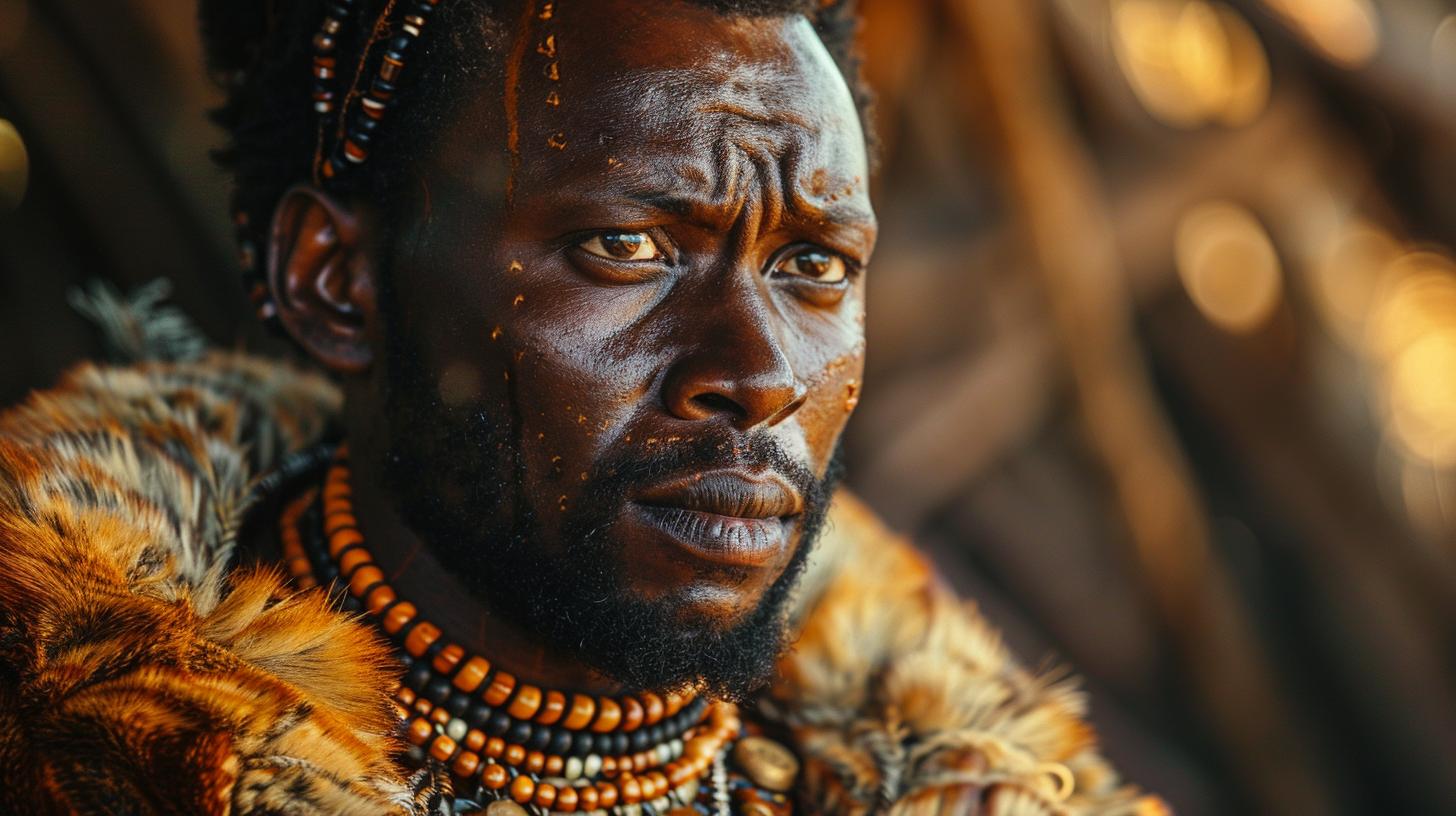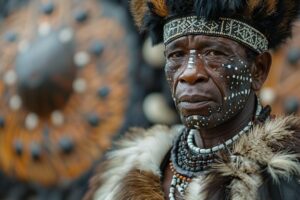King Senzangakhona Kajama: The Legacy of the Zulu Leader

King Senzangakhona Kajama was a prominent leader of the Zulu Kingdom, known for fathering three Zulu kings including Shaka. His reign marked a significant period of Zulu history, with lasting implications for their culture and lineage.
Senzangakhona’s relationships with his wives and children played a key role in shaping the future of the Zulu nation. The succession from Senzangakhona to his descendants, notably Shaka and his successors, ushered in a new era of Zulu leadership.
Early Life and Rise to Power
King Senzangakhona Kajama’s early life and ascent to power were shaped by his familial ties and the political landscape of the time.
Jama kaNdaba and Mthaniya Sibiya
Senzangakhona, son of chief Jama kaNdaba and Mthaniya Sibiya, inherited leadership following his father’s passing. His upbringing within the Mthethwa confederation set the stage for his future reign.
Becoming King of the Zulus
Upon assuming the role of king, Senzangakhona led the Zulu tribe during a period of transition.
The Zulus, once a small faction under Dingiswayo’s rule, saw shifts in their cultural practices under Senzangakhona’s leadership.
Family and Wives
King Senzangakhona Kajama’s family structure and marital relationships played a pivotal role in the history of the Zulu Kingdom. Through his numerous marriages, he fathered many children who would go on to shape the future of the Zulu people.
Marriages and Children
Senzangakhona had at least sixteen wives, resulting in a large and diverse offspring. His wives were significant in the social and political fabric of the Zulu society, each playing a unique role in the royal household.
Relationship with Nandi kaBhebhe eLangeni
Of all his wives, Nandi kaBhebhe eLangeni held a special place in Senzangakhona’s life. Despite not being his Great Wife, the relationship between Senzangakhona and Nandi was unconventional yet impactful, as it led to the birth of the future Zulu king, Shaka.
The Role of Mpikase kaMlilela Ngobese
Another significant wife of Senzangakhona was Mpikase kaMlilela Ngobese, who gave birth to Dingane, a pivotal figure in the Zulu history. Dingane’s ascendancy to power marked a crucial turning point in the leadership of the Zulu nation.
The Legacy of Songiya kaNgotsha Hlabisa
Songiya kaNgotsha Hlabisa, yet another wife of Senzangakhona, bore him a son named Mpande. Mpande’s reign as king after deposing Dingane signified a period of stability and consolidation within the Zulu Kingdom, setting the stage for future developments within the royal lineage.
Succession and Descendants
Following the death of King Senzangakhona Kajama in 1816, the Zulu nation faced a period of transition in leadership, marked by intrigue and power struggles among his heirs.
Sigujana as Heir
Sigujana, the official heir to the throne, briefly assumed the title of king after his father’s passing.
However, his rule was short-lived as the ambitious Shaka orchestrated his ascent to power.
Rise of Shaka and the Zulu Kingdom
Shaka’s rise to kingship marked a pivotal moment in Zulu history, transforming the once small tribe into a formidable kingdom through military conquest and strategic alliances.
Reign of Dingane and Mpande
Following Shaka’s assassination, Dingane seized control, but his rule was marred by instability and internal strife.
Eventually, Mpande emerged as a stabilizing force, eventually becoming king and ushering in a period of relative peace.
Cetshwayo and the End of an Era
Under the reign of Cetshwayo, the Zulu Kingdom faced increasing encroachment from European powers, culminating in the Anglo-Zulu War and the eventual dissolution of Zulu independence. Cetshwayo’s legacy as the last great Zulu king remains a testament to the once-mighty empire.
.









